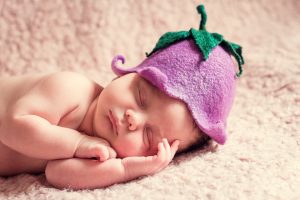When discussing light therapy, children aren’t typically brought up in conversation. It’s easy to assume kids are primarily happy. Children would seem to have far less to worry about day-to-day. They can power through just about anything, have endless energy, and they wake up ready for the day. Most of the time….
But kids are sensitive to the world around them, too. In fact, some things may be more difficult for children to deal with because they are not old enough to understand what’s happening. Children can be just as easily affected by the outdoor weather, seasonal changes, jet lag, depression, and skin conditions. Light therapy is equally as important and ground breaking to children as it is to adults.
Seasonal affective disorder, or SAD, is a form of depression that occurs in the fall and winter months as the days become shorter and the nights become longer. When this seasonal change occurs it’s hard to keep our body’s internal clocks or circadian rhythms in check. The change typically results in decreased moods, low energy levels, trouble sleeping, and more. The depression begins to subside in the spring when the days start to become longer again. Anti-depressants prescribed for depression are dangerous for children and not recommended. This is where light therapy comes into play. Drug-free, harm-free, all natural treatment sessions can raise children’s energy levels when they need it the most.
Color light therapy has a wide array of benefits for children as well. This form of light therapy shines different colored lights into children’s eyes to stimulate the brain and enhance it’s functions. Unlike light boxes used for SAD and similar conditions, colored light therapy is medically supervised. Doctors guide their patients through a series of therapies involving many different colors of light. This form of therapy has been proven successful in treating many different conditions and disorders from allergies, to vision improvements, to speech problems, and more.
Growing Up Easier is a website dedicated to helping parents and guardians raise their children in the best way possible. John Downing, PhD, a contributor to the website, wrote a piece about light therapy for children and youth. In his piece, he lists all of the ways that light therapy has helped children:
- Allergies
- Anxiety
- Arithmetic difficulties
- Arthritis
- Attention Deficit Disorder
- Hyperactive Disorder
- Autism
- Balance problems
- Behavioral problems
- Borderline personality structure
- Brain damage
- Chronic fatigue syndrome
- Conduct disorder problems
- Coordination
- Depression
- Developmental retardation
- Digestion problems
- Disorganization
- Down’s Syndrome
- Dyslexia
- Epilepsy
- Headaches
- Hyperactivity
- Learning differences
- Learning disabilities
- Rage
- Reading difficulties
- Seizures
- Short term memory deficiency
- Speech problems
- Stress
- Wandering eye problems
(GrowingUpEasier.org)
Downing also explains how light therapy can directly affect a child’s lifestyle and well-being in five different categories. Downing has been researching light therapy in children for some time and strongly believes in the treatment’s powerful effects. The website reads…
Body: Light Therapy eliminates physical problems such as fatigue, insomnia, hyperactivity, poor coordination, balance difficulties, autonomic and endocrine imbalances.
Spirit: Light Therapy gives the soul back its light and helps the spirit soar. It takes the innate energy of the child or youth, which the mind sends out into the world, and grounds it more deeply into the soul. It allows the child or youth to control their energy instead of the energy controlling the child.
Mind: Intellectual difficulties are lessened; including poor reading comprehension, pronunciation, concentration, memory, organizational ability, and mathematical ability.
Emotions: Emotional problems are reduced or eliminated; including low self-esteem, depression, fears and anxieties, SAD (Seasonal Affective Disorder).
Social: When the body, mind and emotions of a child are functioning optimally and the spirit is soaring, social interactions will be appropriately smooth and rewarding.
(GrowingUpEasier.org)
Light therapy is safe for children and is a wonderful and effective alternative to medication. If your child or someone you know is struggling with any of the disorders or conditions discussed, light therapy might be a good option. Give it a shot!



